There are different categories of fruits regarding origin and nutrition: tropical, temperate, sweet, acidic, fatty- and vegetable fruits. The fruits vary in suitability for humans, nutritional composition, toxicity through secondary plant metabolites, and evolutionary past.
Besides taste, there is much to consider with different fruit types. For example, not all fruits are sweet, and some fruits contain a good amount of fat, protein, or toxins – and some foods are fruits that we do not even consider fruits. Fruits do not come in exact categories, but they have varying features well worth knowing for your health!
Humans are adapted to high-fruit diets, but not all fruits are alike, and not all fruits have evolved as food sources for humans: the “right” types of fruits are the foundation for good health, and others were not edible (or even toxic) before they were cultivated, bred and hybridized!
Primates, in general, are important seed dispersers in tropical forests. In the case of humans, tropical fruits have been shaped by the evolutionary history of our frugivorous ancestors and our tropical forest origin. Fruits from colder climates, temperate fruits, have not evolved as food sources for humans.
While all edible fruits provide us with benefits and nutrition, some are vital for human health: tropical fruits! The reason lies in our evolutionary past as seed dispersers: Humans are tropical frugivores.

Read more about why not all fruits are an original food source of humans here. This article dives straight in to the different types of fruits:
Different types of fruits
There are different ways to categorize fruits. And some fruits belong to more than one category, so they overlap. Many acidic fruits are also watery and can turn quite sweet. Many fleshy fruits are sweet, but some are veggie fruits. Here the categories are based on origin, sweetness and acidity, but also their fat-, and water content. All fruits contain some level of acidity and sweetness in different quantities, and the levels change during ripening. On this continuum, the classification cannot be exact.
Further, there is the aspect of evolution: is it a fruit that originally evolved with humans as a food source? The simple answer here is that if the wild type of the fruit is edible and palatable, then it is “human food”! If a fruit had to be cultivated to be edible and delicious, then it most likely is a fruit that has evolved as bird food. This is – obviously – a simplification, but it does serve its purpose of understanding fruit types better.
Edible, non-toxic ripe fruits of all kinds are generally suitable for human physiology. However, there are differences in nutritional components and also their origin and evolutionary history with the frugivore.
Here is an overview of how different fruits can be and what it means for your health:
| Positive Aspects | Negative Aspects | Examples | |
|---|---|---|---|
| Tropical Fruits | Evolved as primate food: most are edible in their wild form. Highly nutritious and energetic | None | Passion fruit, mangoes, pineapples, bananas |
| Temperate Fruits | Contains many micronutrients and high in hydration | Have not evolved as food source for primates. Most are not edible in their wild genotype. We eat cultivated hybrids | Apples, plums, raspberries, peaches |
| Sweet Fruits | Like Tropical Fruits | None | Bananas, mangoes, lychees |
| Acidic Fruits | High in vitamin C; suitable for detoxification diets | Can wear of teeth enamel | Kiwi, passion fruit, citruses, pineapples |
| Fatty Fruits | High in fat-soluble vitamins and healthy fatty acids, mineral-rich | Can be heavy on digestion, can contain plant defense molecule | Brazil nuts, coconuts, pecans, olives, avocado |
| Vegetable Fruits | Good for hydration, rich in minerals, savory | Contain low levels of natural toxins, toxic if levels are too high | Cucumber, tomatoes, squashes |
1. Tropical and subtropical fruits
Tropical forests sustain a large range of frugivores, so there are many different types of tropical fruits. Generally, tropical fruits that are more acidic and grow in canopies are bird foods, and sweeter, energy-rich, and dense fruits are primates’ preference.
Thus tropical fruits are the most important food for humans, as tropical frugivores!
Tropical fruits differ in nutritional profile from fruits from temperate climates. For example, they contain more protein than their temperate counterparts and a better omega-3:6 ratio. They are generally richer in energetic macronutrients, such as lipids and carbs, and are thus more nutritious and saturating.
Tropical fruits’ appearance and taste are usually very appealing to us. Because humans originated in the tropics as a species, these fruits are particularly suitable as food sources for us (we’re very well adapted to eating tropical fruits). Thus, we live in the wrong climate and food zone! However, when it comes to eating healthily, tropical fruits are essential as they provide us with maximum nutrients and minimal toxic load. A practical tip here is to use frozen fruit in smoothies or smoothie bowls (e.g., mixed with banana). But whenever we find good quality ripe tropical fruit, we should grab it!
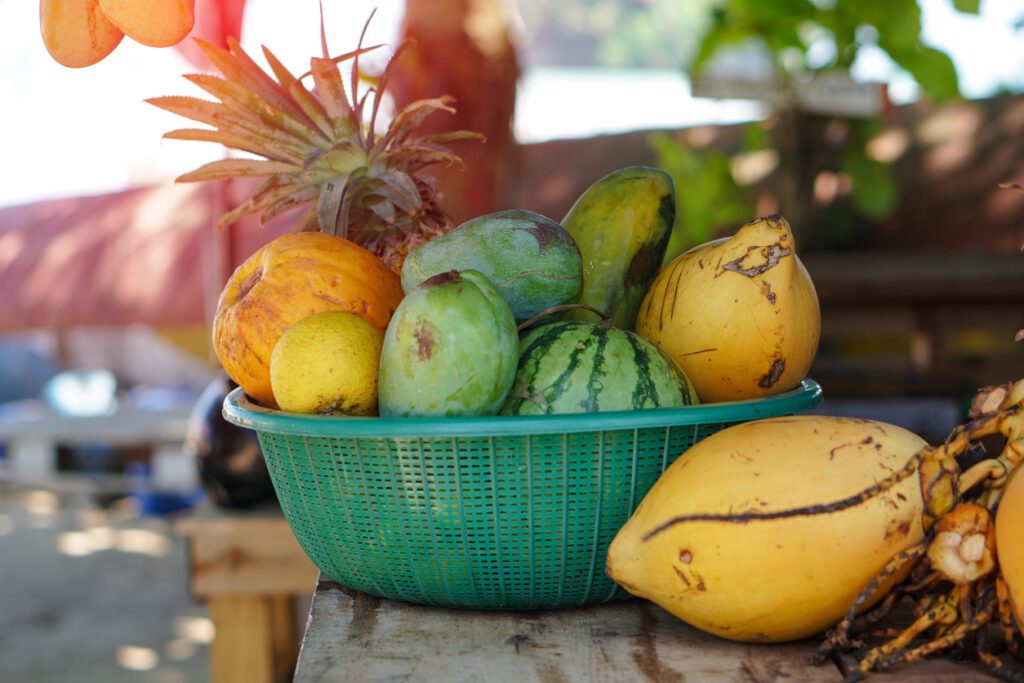
2. Temperate fruits
Fruits native to colder zones are often smaller, more acidic, and watery than tropical fruits. Most wild genotypes are not edible for humans and looked completely different than today (see examples here). Our modern fruits from temperate climates are heavily cultivated and altered in their qualities to make them more suitable for humans: size, sweetness and acidity, and – in some cases – even toxicity.
Temperate and acidic fruits have evolved with seed-dispersing animals indigenous to temperate zones, which are mostly birds. However, through directed breeding, we have sped up evolutionary processes to a certain degree.
Although temperate fruits are not the optimal evolutionary match, they have healthy properties for us!
We love to add sugar to acidic temperate fruits: imitating tropical fruits!
3. Sweet and fleshy fruits
Most sweet fruits grow in tropical climates and are the first choice of primates (see above).
Sweet fruits contain more simple sugars and relatively low acids. While there are still acidic components (like vitamin C) present, the pH is higher than in acidic fruits. More sweetness also means more sugars and thus more calories – to sustain a mammalian (and primate) organism.
4. Acidic, sub-acidic and watery fruits
Sour taste is off-putting for most animals (Frank et al., 2022), but not for humans, apes, and birds – all the frugivorous species that need to take in the (sour-tasting) vitamin C from food sources – fruits! Humans (and apes) are sweet lovers, because of their frugivorous nature, but do enjoy the combination of sweet and sour taste in fruits. Birds, however, do not taste sweetness (except for nectarivorous hummingbirds) and are attracted to sour, acidic fruits.
Acidic fruits are often quite watery and often have evolved with birds as their frugivore. They contain high amounts of vitamin C but are less fleshy and energetic than sweet tropical fruits. Acidic fruits are often used on detox days and “fruit fasts” and are said to be highly cleansing. However, they cannot sustain the body with their nutritional profile!
5. Fatty fruits and true nuts
True nuts are fruits, botanically spoken. But some nuts are technically seeds. Nuts are fruits that are hard, dry, and generally not sweet but contain more fat and protein are nuts. With this composition and nutrient density, they contain more fat-soluble vitamins and minerals than watery fruits. Botanically it is the seed’s shell, but we consume the seed itself, too. Some fruits are exceptionally high in fats, like avocado or olives. Regarding digestion, they are “classified” somewhat differently than sweet fruits, but they provide additional micronutrients. Nuts can be included in the diet as a supplement and for extra satiety, but not as the main part.
Coconuts are not technically fruits. However, they are an important staple of frugivorous primates and contain a good portion of fat.
Fatty fruits like avocados or açai berries are calorie-dense and help sustain frugivores nutritionally.
6. Non-sweet vegetable fruits
Some vegetables are actually fruits: the plant parts that have developed from a flower. Those vegetable fruits are also called non-sweet fruits. They taste way less sweet than “typical” fruits, because they contain much less simple sugar. This is because they have not evolved with primates.
In fact, most non-sweet veggie fruits were originally highly poisonous and are only safe and edible today because of selective breeding. However, there are still people that are sensitive to the remaining small content of toxins in nightshades or other veggie fruits. Read more on this topic here.
List of fruits: type, origin and seed-dispersers
This overview shows where the fruits we commonly eat originate, their nutritional features, and what seed-dispersing animals evolved with them (their wild type). Further, the degree of directed breeding by humans: hybridization of modern cultivation: is the naturally evolved wild type edible and palatable for humans?
Why does this matter? It shows if a fruit is edible for primates (humans) naturally and how well they are suited as human foods. The same goes for other seed-dispersing animals: For example, primates love sweet, fleshy fruits and can eat big amounts of bananas, while birds are primarily attracted to acidic, smaller fruits; they can only eat small amounts of bananas – not as the main staple food.
This gives us valuable information about the natural human diet and our tropical origin – and of course how to use each type of fruit accordingly in our diet.
| Fruit | Origin | Type | Seed -Dispersers | Wild Type Edible for Humans? |
|---|---|---|---|---|
| Açai | Tropical | Fatty | Birds, Bats, Primates | Yes |
| Acerola | Tropical | Acidic | Birds | Yes |
| Avocado | Subtropical | Fatty | None, extinct larger Mammals | Yes? |
| Bananas | Tropical | Sweet | Primates | Yes |
| Breadfruit | Tropical | Sweet | Primates | Yes |
| Mangosteen | Tropical | Sub-acidic | Primates, Birds? | |
| Guava | Tropical | Sub-acidic | Birds, Primates? | |
| Durian | Tropical | Sweet | Primates | Yes |
| Cantaloupe | Subtropical | Sub-acidic | Yes? | |
| Watermelon | Subtropical | Sub-acidic | No | |
| Aubergine | Subtropical | non-sweet | No, Toxic | |
| Tomato | Subtropical | non-sweet, acidic | No, Toxic | |
| Bellpepper | Subtropical | non-sweet | No, Toxic | |
| Squash | Temperate | non-sweet | None, extinct larger mammals | No, Toxic |
| Zucchini | Temperate | non-sweet | No, Toxic | |
| Cherry | Temperate | Sub-acidic | No? | |
| Peach | Temperate | Sub-acidic | No? | |
| Apricot | Temperate | Sub-acidic | No? | |
| Strawberries | Temperate | Mammals, Insects, Snails, birds | Yes | |
| Rasperries | Temperate | Birds | No? | |
| Currants | Temperate | Birds | No? | |
| Blueberries | Temperate | Birds | Yes? | |
| Apple | Temperate | Sub-acidic | Birds | No |
| Pear | Temperate | Sub-acidic | Birds | No |
| Walnut | Temperate | Fatty | Yes? | |
| Chestnut | Temperate | Yes? | ||
| Figs | Subtropical | Sweet | Yes? | |
| Dates | Subtropical | Sweet | Yes | |
| Clementine | Subtropical | Acidic | Unknown | No |
| Oranges | Subtropical | Acidic, Sweet | Unknown | No |
| Lemons | Subtropical | Acidic | Unknown | No |
| Limes | Subtropical | Acidic | Unknown | No |
| Rambutan | Tropical | Sweet | Primates | Yes |
| Lychee | Tropical | Sweet | Primates | Yes |
| Dragonfruit | Tropical | Sweet | Primates | Yes |
| Papaya | Tropical | Sweet | Birds, Primates | Yes |
| Mango | Tropical | Sub-acidic | Birds, Primates | Yes |
| Passion fruit | Tropical | Acidic | Birds, Primates | Yes |
| Granadilla | Tropical | Sub-acidic | Birds, Primates | Yes |
| Star fruit | Tropical | Acidic | Yes? | |
| Soursop | Tropical | Acidic | Yes | |
| Grapes | Subtropical | Sweet, Sub-acidic | Yes |
Wild-type fruits before cultivation: temperate vs tropical
Some wild-type fruits are very different from the cultivated hybrid fruits we eat today. This is especially the case for fruits that are not really edible or tasty in the wild – mostly temperate fruits. This is because most fruits that grow in colder climates originally are small and very acidic – food for birds. On the other hand, tropical wild fruits are sweeter and edible – primate and mammal fruits.
Here are are a few examples:
1. Strawberries: temperate, sub-acidic
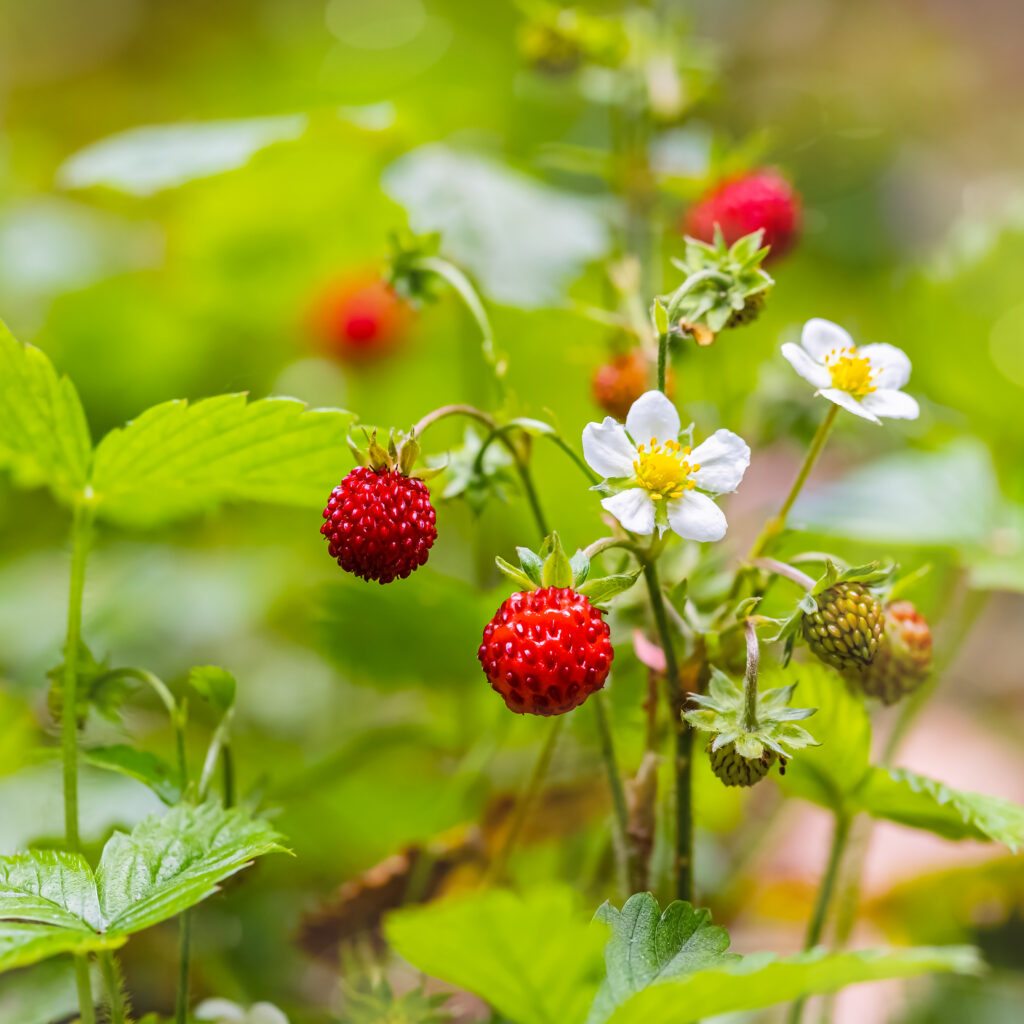
The original and wild strawberries are tiny compared to the modern version. However, they are sweet and tasty for mammals.
2. Apples: temperate, acidic or sub-acidic
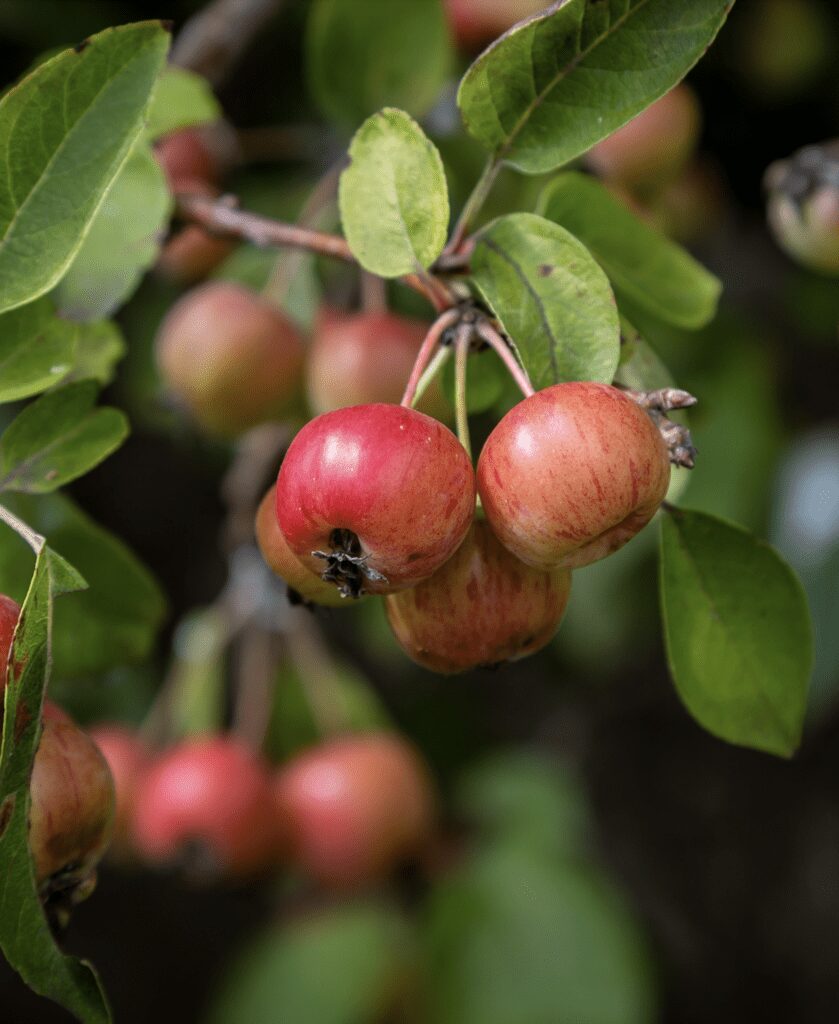
The crabapple is similar to the original wild apples: they are sour and not tasty for mammals. They evolved with birds as a food source and as seed dispersers.
3. Mangoes: tropical, sub-acidic
In contrast to the temperate bird fruits, it comes as no surprise that most wild tropical fruits are edible for humans: humans are still tropical frugivores anatomically and physiologically.
4. Bananas: tropical, sweet
Read more about the biological suitability of different foods for humans:
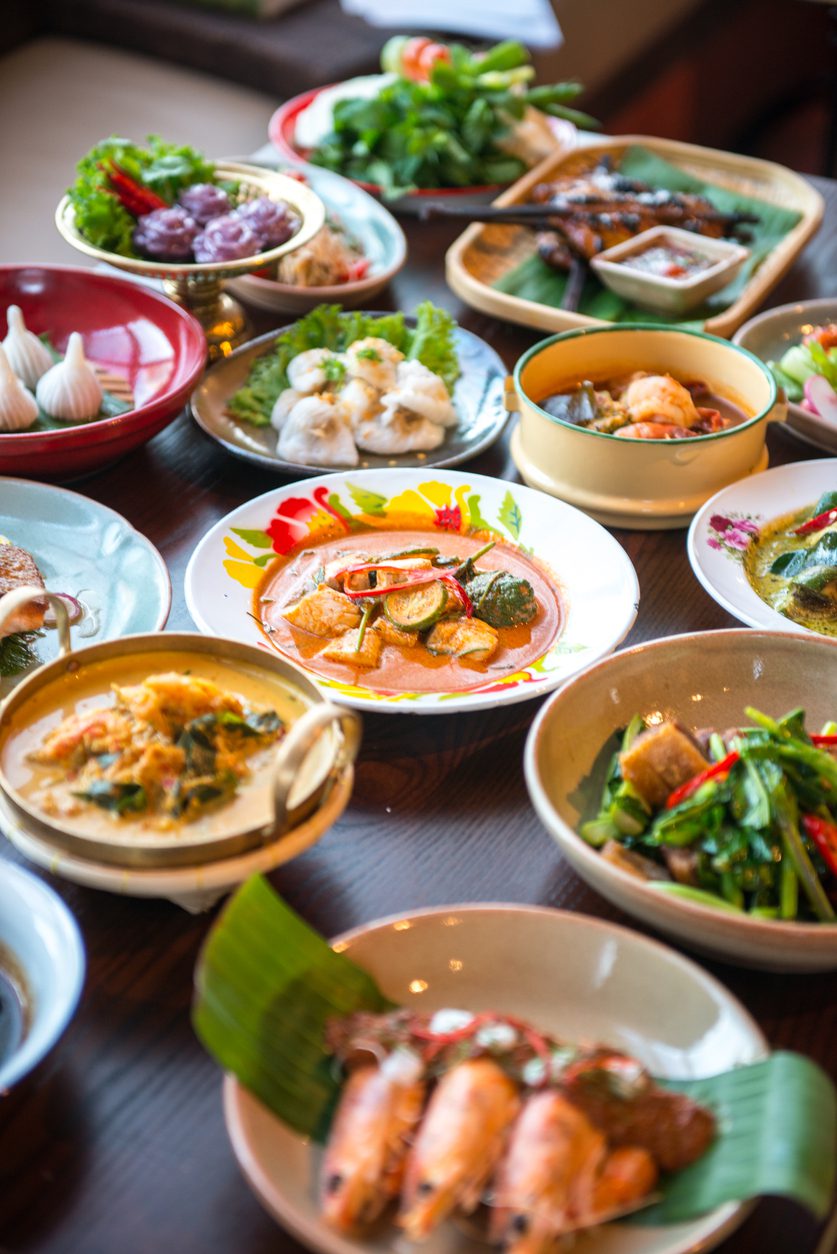
Go To What Food Are Really Suitable for Humans?
References
- S.E. Stehn et al. (2020) What is a fruit? Frontiers for Young Minds. Available at: https://kids.frontiersin.org/articles/10.3389/frym.2020.00027 (Accessed: April 7, 2023). (link)
- Andresen, E., Arroyo-Rodríguez, V. and Ramos-Robles, M. (2018) “Primate seed dispersal: Old and new challenges,” International Journal of Primatology, 39(3), pp. 443–465. Available at: https://doi.org/10.1007/s10764-018-0024-z. (link)
- K. Valenta, O. Nevo, The dispersal syndrome hypothesis: How animals shaped fruit traits, and how they did not. Functional Ecology. 34, 1158–1169 (2020), doi:10.1111/1365-2435.13564. (link)
- A. B. Pereira-Netto, Tropical fruits as natural, exceptionally rich, sources of bioactive compounds. International Journal of Fruit Science. 18, 231–242 (2018), doi:10.1080/15538362.2018.1444532. (link)
- Frank, H.E. et al. (2022) “The evolution of sour taste,” Proceedings of the Royal Society B: Biological Sciences, 289(1968). Available at: https://doi.org/10.1098/rspb.2021.1918. (link)
- Campbell, V. (2022) How songbirds evolved a sweet tooth, All About Birds. Available at: https://www.allaboutbirds.org/news/how-songbirds-evolved-a-sweet-tooth/# (Accessed: April 8, 2023). (link)
- E. Brodwin, Here’s what fruits and vegetables looked like before we domesticated them. Business Insider (available at https://www.businessinsider.com/what-foods-looked-like-before-genetic-modification?r=US&IR=T). (link)
- No Author, Nuts, U.S. Forest Service (no date), Available at: https://www.fs.usda.gov/wildflowers/ethnobotany/food/nuts.shtml (Accessed: April 7, 2023). (link)
- S. Sayago-Ayerdi, D. L. García-Martínez, A. C. Ramírez-Castillo, H. R. Ramírez-Concepción, M. Viuda-Martos, Tropical fruits and their co-products as bioactive compounds and their health effects: A Review. Foods. 10, 1952 (2021). (link)

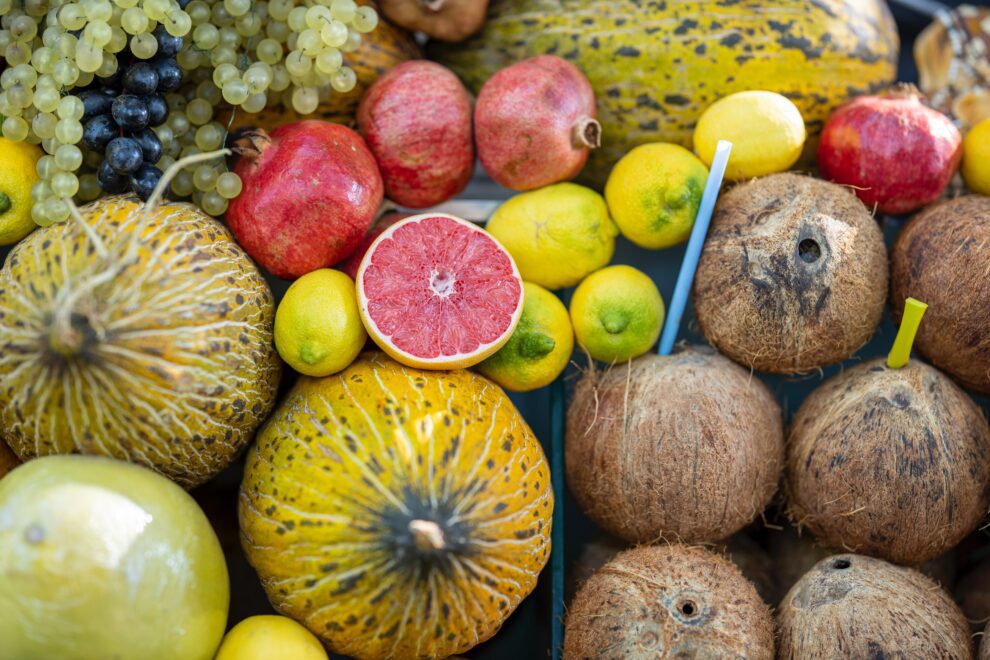
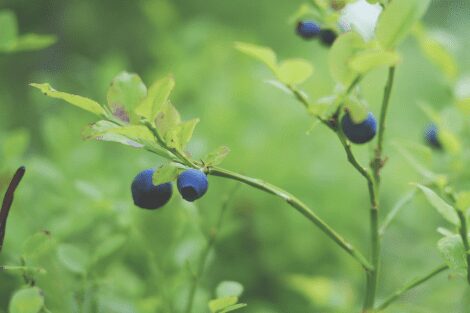

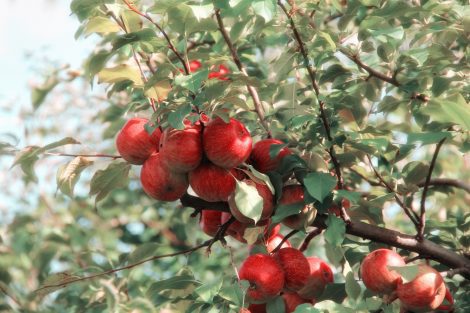
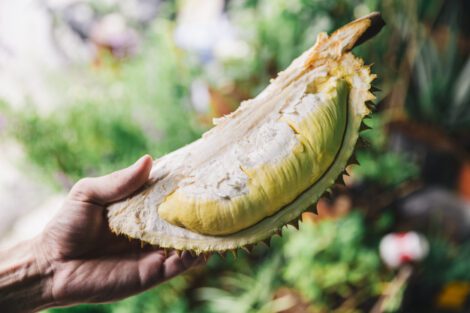
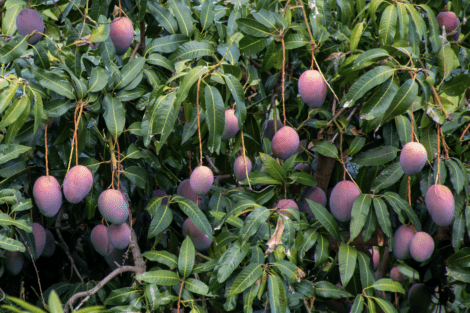
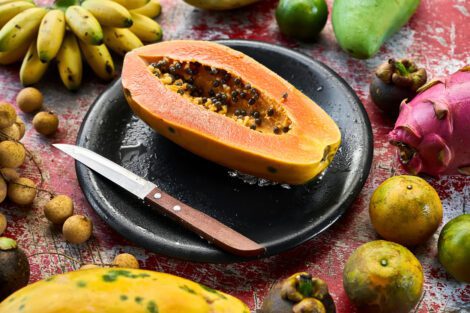
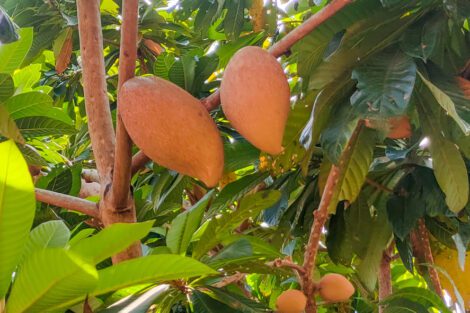
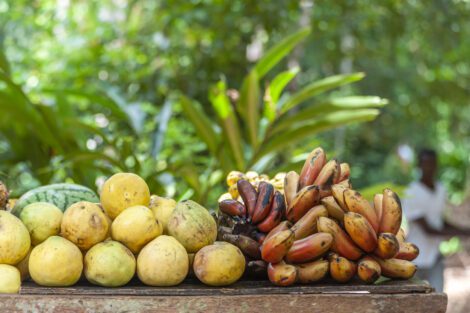
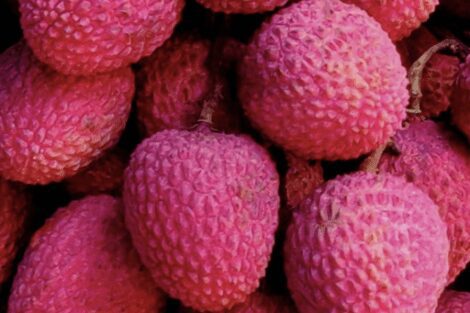
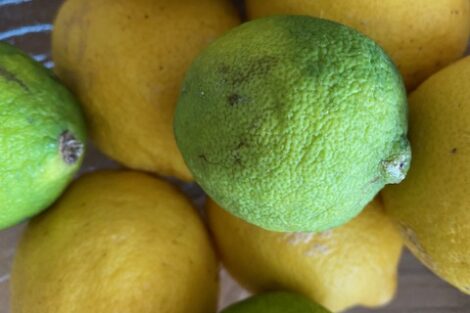
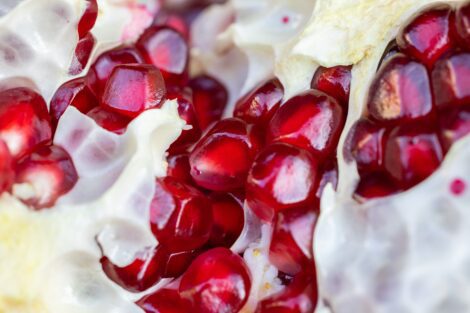
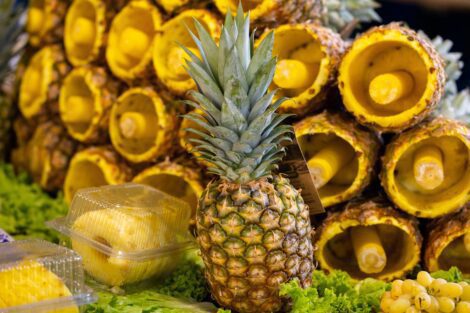
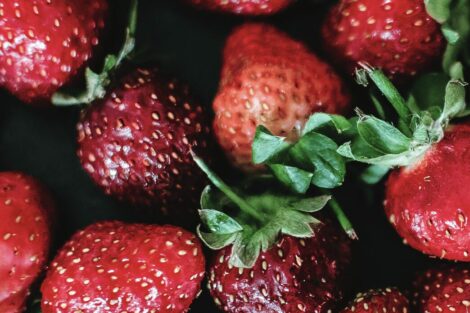
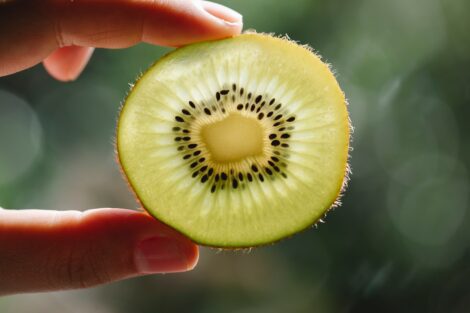
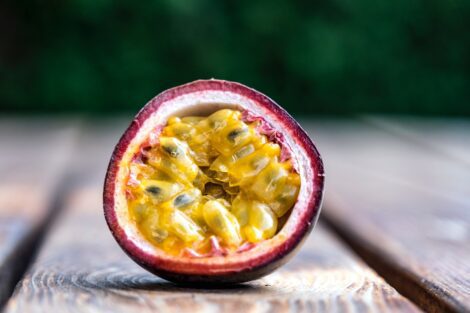
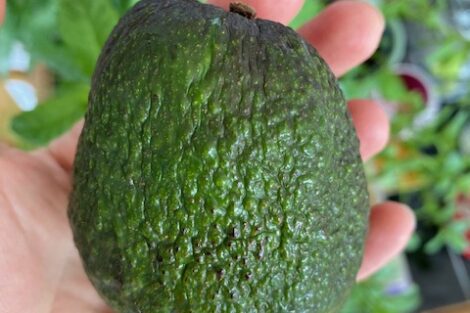
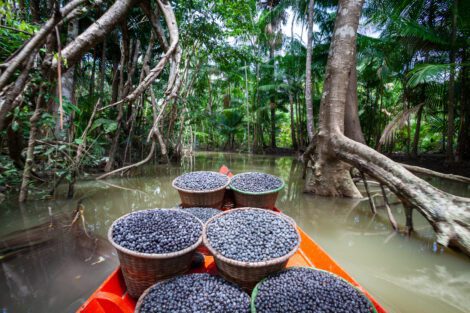


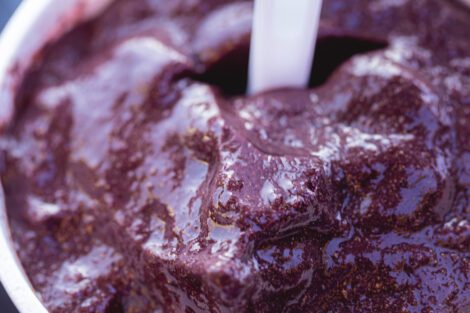
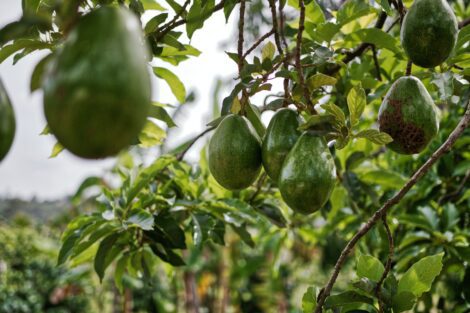
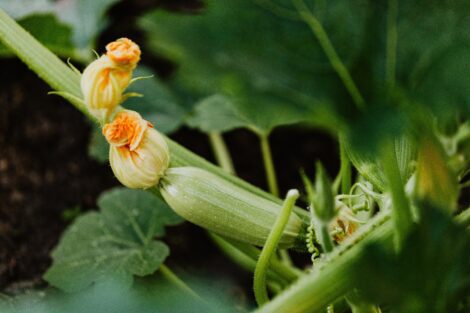
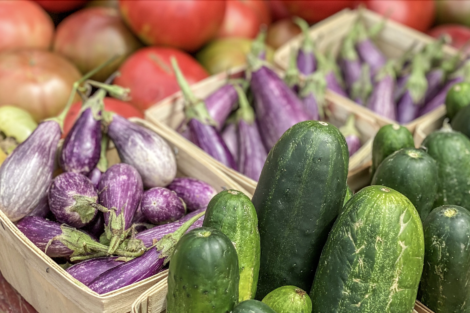
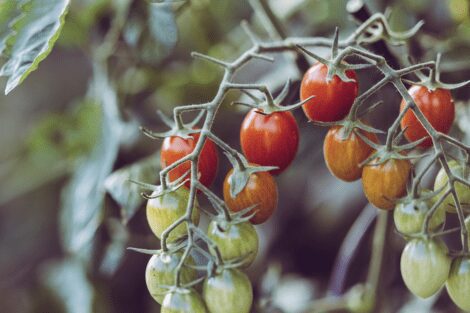
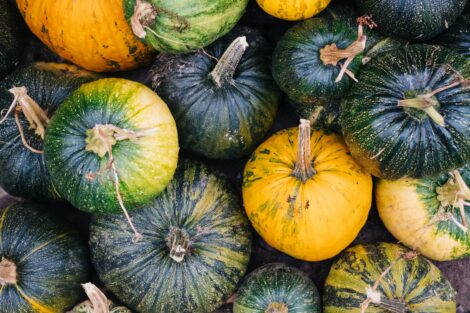
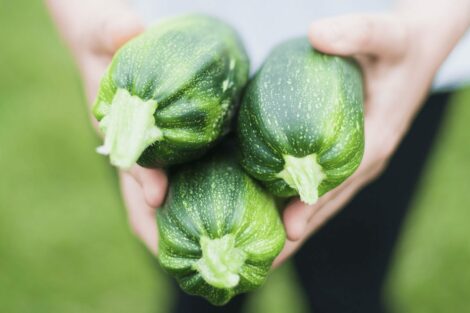
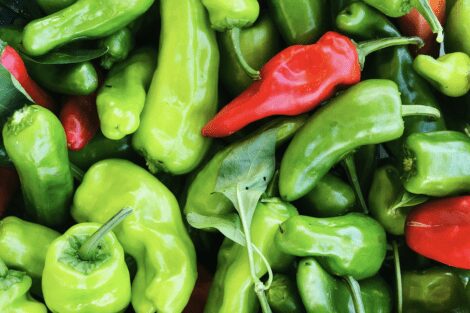
Add Comment